Guest writer: Maurice Frank
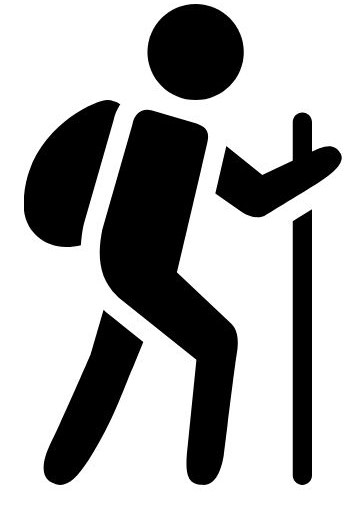
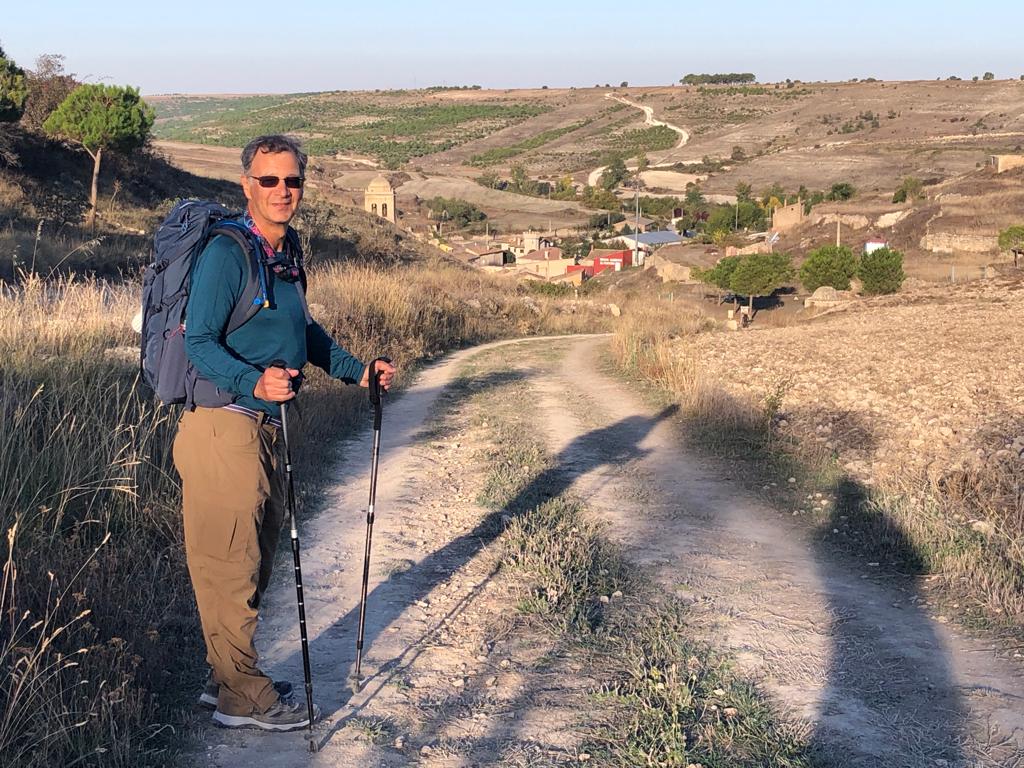
On the morning of Sunday September 17, I was in St. Jean Pied de Port, a quaint town in southwest France. I began walking and five weeks later on the morning of Sunday October 22, I walked into the large open square in front of the Cathedral of St. James in the city of Santiago de Compostella in Spain. I had walked the entire Camino Frances 500 miles (800 kilometers) across northern Spain.
Now, before you think this is a rare and special feat, know that this is a 1200-year-old pilgrimage route. Millions of people from all around the world have walked the Camino Frances, one of several Camino de Santiago (The Way of St. James) routes traversing Spain, Portugal and France. In 2023 alone, over 216,000 walked the Camino Frances and, counting all routes, over 438,000 walked a Camino, according to the Pilgrims Office in Santiago. Far fewer have hiked the much more grueling Appalachian Trail. Yet it was by far the longest walk I have attempted.
Why would I do such a thing? In a word, community. When I began learning about the Camino, I was struck by the strong bonds between Camino pilgrims, and even among those who were preparing for their Camino. I wanted to be part of this. I’m fortunate to have a wide and deep community where I live, but this seemed different. I sensed this Camino community reading posts in the online Camino forum, in the stories told in numerous Camino memoirs I read, countless podcast interviews with Camino pilgrims, and especially when participating in my local Asheville chapter of the American Pilgrims on the Camino, a very active group that embraced me as I learned more about The Way.
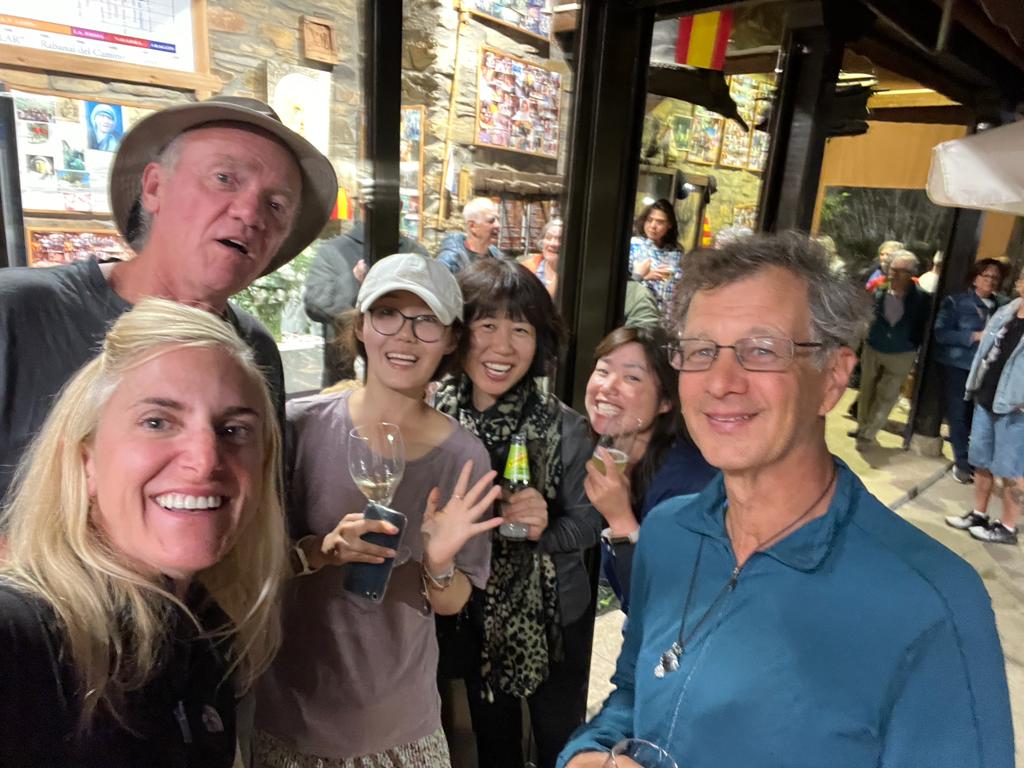
The most prominent social bond is called a Camino Family. This is a group of strangers who meet on the Camino, walk together, eat together, and sleep in the same albergues (dormitory hostels), or at least in the same towns. Camino families often form early in the walk and stay together to reach Santiago as a group. That’s the classic pattern, but variations occur: I was part of four Camino families, and I also experienced other forms of significant social connections.
My first Camino family came together on day one. Barbara, a friend in the Asheville Camino Group and her friend Jean from Tucson planned to start from St. Jean the same day I did – a happy coincidence. We began walking and stayed together four days through Pamplona where they diverted to walk a section of another route called the Camino Norte. Leanne and Gretchen, American friends we made at our communal dinner the first evening, joined us for Barbara and Jeanne’s farewell dinner in Pamplona. Leanne invited me to walk with them the next day, and they became my second Camino family for the next two weeks until they had to go on ahead of me to catch flights earlier than mine.
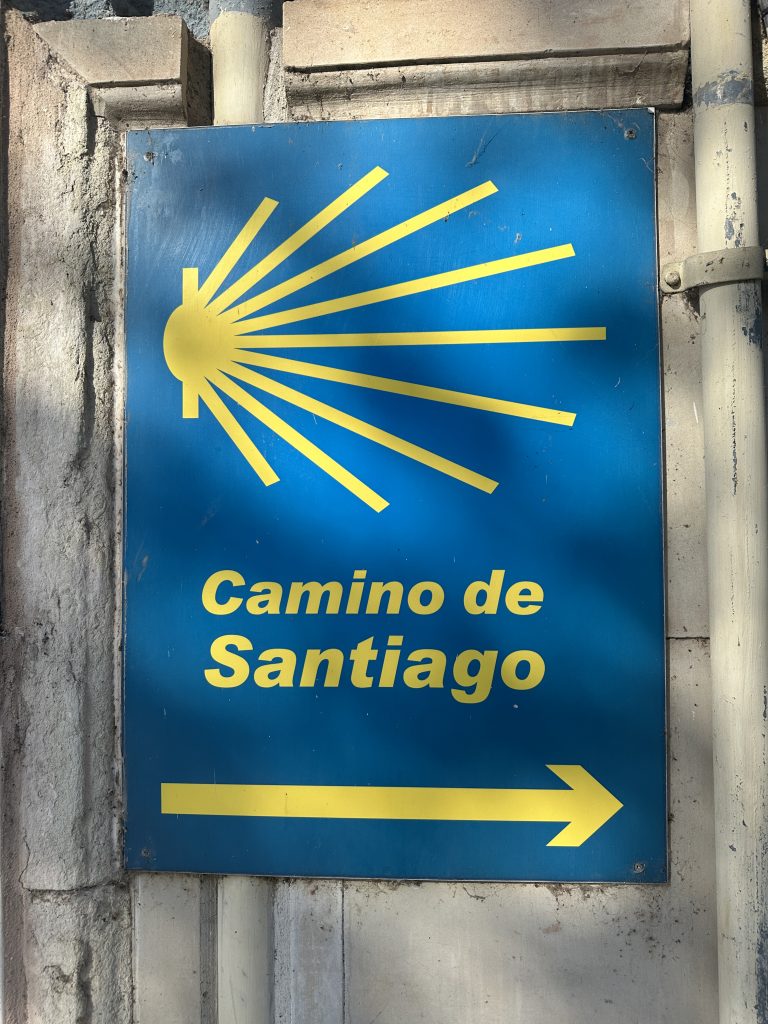
About two weeks later I met Sarah (Washington, DC) and Alistair (Bristol, England) and we bonded over a long lunch at a café and dinner that evening. We walked the next morning to the Cruz de Ferro, a sacred site on the Camino where Pilgrims leave a stone they carried from home. The stone ritual is meaningful and often emotional. Some stones represent burdens, others are in memory of lost loved ones, and some release joys. Later, we separated that afternoon because we reserved beds in different towns. Fortunately, we reunited the day I completed my Camino and we shared a celebratory bottle of wine in Santiago. Our time was short, but no less of a connection. We’ve stayed in contact after leaving the Camino.
After Sarah and Alistair, I mostly walked alone for the next week, but I soon found myself staying in the same albergues with the same small group of Pilgrims. We formed my last Camino family on the final days of the walk. Jacques (Quebec), Annick (France), Vina (Australia), Martha (Wyoming) and I walked into Santiago together. Because community was my main motivation for walking, sharing this culminating event with a Camino family was the best possible finish for me.
While Camino families were a high point of my social experience, I also discovered two other social connections that were equally enjoyable. Camino friends were people I knew by name and usually a little of their story. We often met spontaneously at coffee or lunch stops, or we stayed at the same albergue. We sometimes walked together, but not always. We weren’t truly a family, but we were friends – at least for a while. People walk slower or faster, or shorter or longer days, and drift apart. I never knew when my last day with someone would be. Sometimes several days and many towns later we would find each other again. Such reunions were joyful occasions with lots of hugs, like finding a long-lost friend that I first met a few weeks ago.
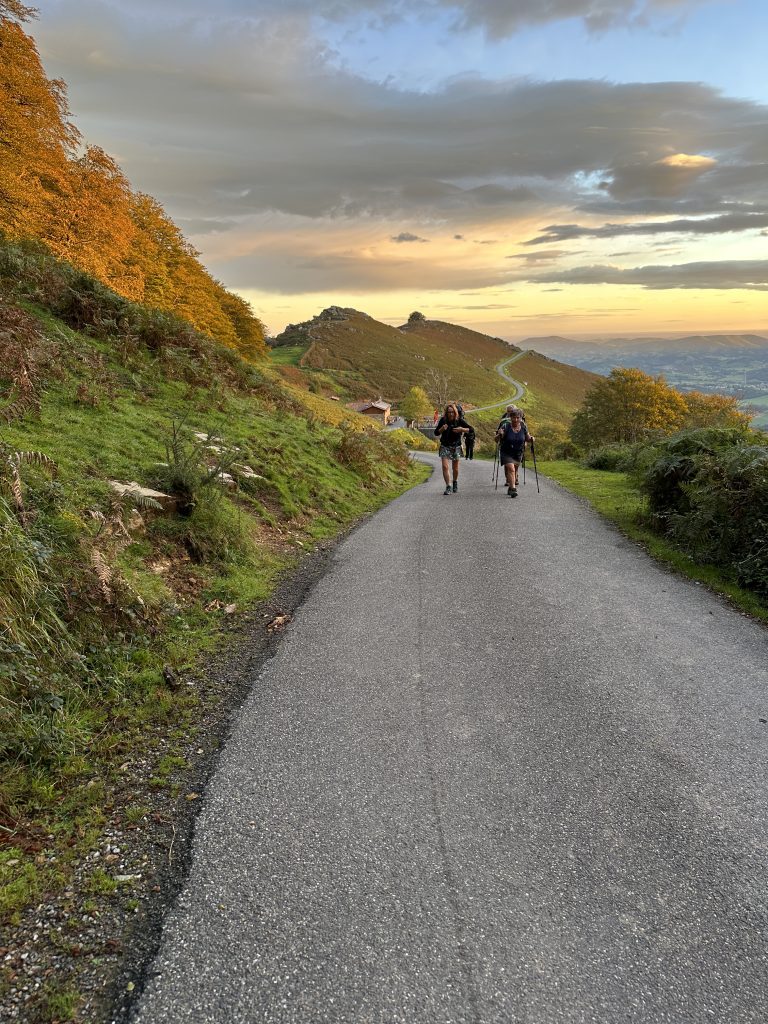
Another looser but still meaningful connection was with other pilgrims who became familiar faces. We’d see each other every once in a while, enough to recognize each other and say “Buen Camino” (the greeting which means “Good Way”) or just wave. We may or may not have exchanged names, but we knew each other. More significantly, we knew we shared a common purpose and destination, and our journeys were arduous and unlike anything we do at home in our everyday lives; this bonded us regardless of how close we were or not. It was Camino camaraderie of a different sort.
Weeks after returning home, my phone still notifies me I have a WhatsApp message from a Camino friend, and seeing their name makes me smile.
While the unique nature of community on the Camino was my main calling, I also wanted my Camino to be a spiritual experience. In the OLLI course “Aging as a Spiritual Journey” Robin Stavisky, the instructor, described spirituality as knowing you are part of something bigger than yourself. A 500 mile walk across a country was certainly bigger than myself. I was always conscious of the immense human scale of the endeavor: the millions of people who walked the same path over centuries before and centuries to come, and from all over the world. Walking early in the morning before sunrise, I saw countless stars and planets in the dark rural skies not obscured by city lights. I walked under the immense scale of the larger universe. I felt small, but I was part of it.
And in a different way, whenever I found myself surrounded by people on the trails, in the bars and cafes, and in the shared albergue dorms, being with others and not alone was another way of being part of something larger than myself – a community. Eventually I understood that my experience of community and my spiritual experience are two dimensions of the same experience. To be part of a community is inherently to be part of something bigger than just me.
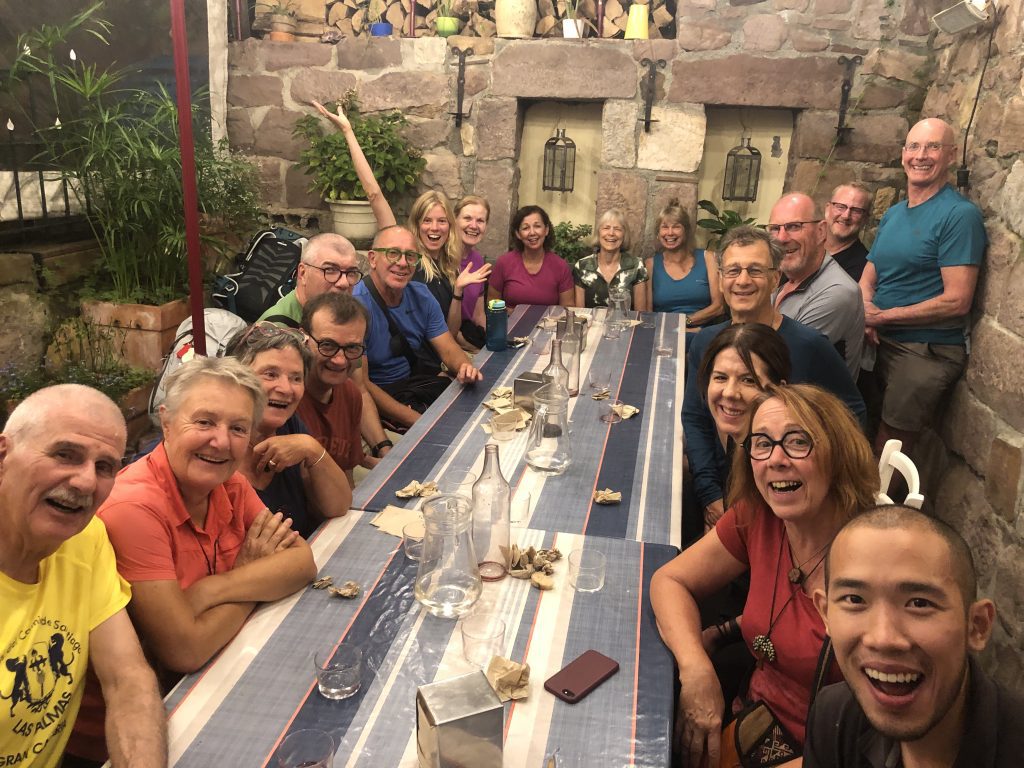
This insight was one of the key lessons I learned or relearned on the Camino. The fast and deep but often short Camino friendships reminded me of impermanence, and the need to savor every moment while it lasts. As much as I enjoyed a fantastically rich social experience, I also rediscovered the serenity of solitude and the fine balance between being with others and myself, a Yin Yang kind of complementarity.
When my newly acquired hiking poles got stuck and couldn’t be adjusted after only two days, I learned to use what I have, even if it isn’t perfect. When one of the poles fell apart two weeks later, I finished the Camino with one pole: not what I wanted, but good enough.
I fully intended to extend my Camino beyond Santiago by walking 60 more miles to the coastal town of Finisterre (Latin for end of the earth), but I reached Santiago with too few days remaining before my flight home. Accepting incompleteness and being grateful for what I did accomplish was yet another lesson reinforced.
Alas, my last time in Santiago was the end of my long walk, and the end of my five weeks living in the Camino bubble, a detached life away from home, friends, familiar places and everyday routines. I’m home now. There is so much more I could say about the Camino, but my feet are restless, and I’m going out to walk now.
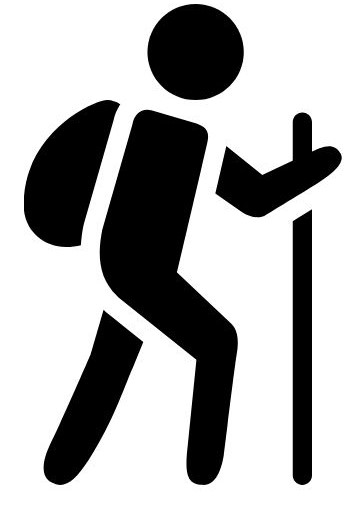
When he isn’t walking, Maurice enjoys being with friends in coffee shops and breweries. Sadly, the lack of sidewalks means he cannot safely walk to them at home, but he can on the Camino. His local friends appreciate that he is able to drive around town to visit with us in our usual hangouts.




Love this
Accepting incompleteness and being grateful for what I did accomplish was yet another lesson reinforced.
I so enjoyed following your journey on the Penguin app, and thereby walked it vicariously. Thank you for your generous sharing of this wonderful experience!
This was great to read as I was not familiar with the Camino. Thanks for sharing your thoughts on this unique journey!